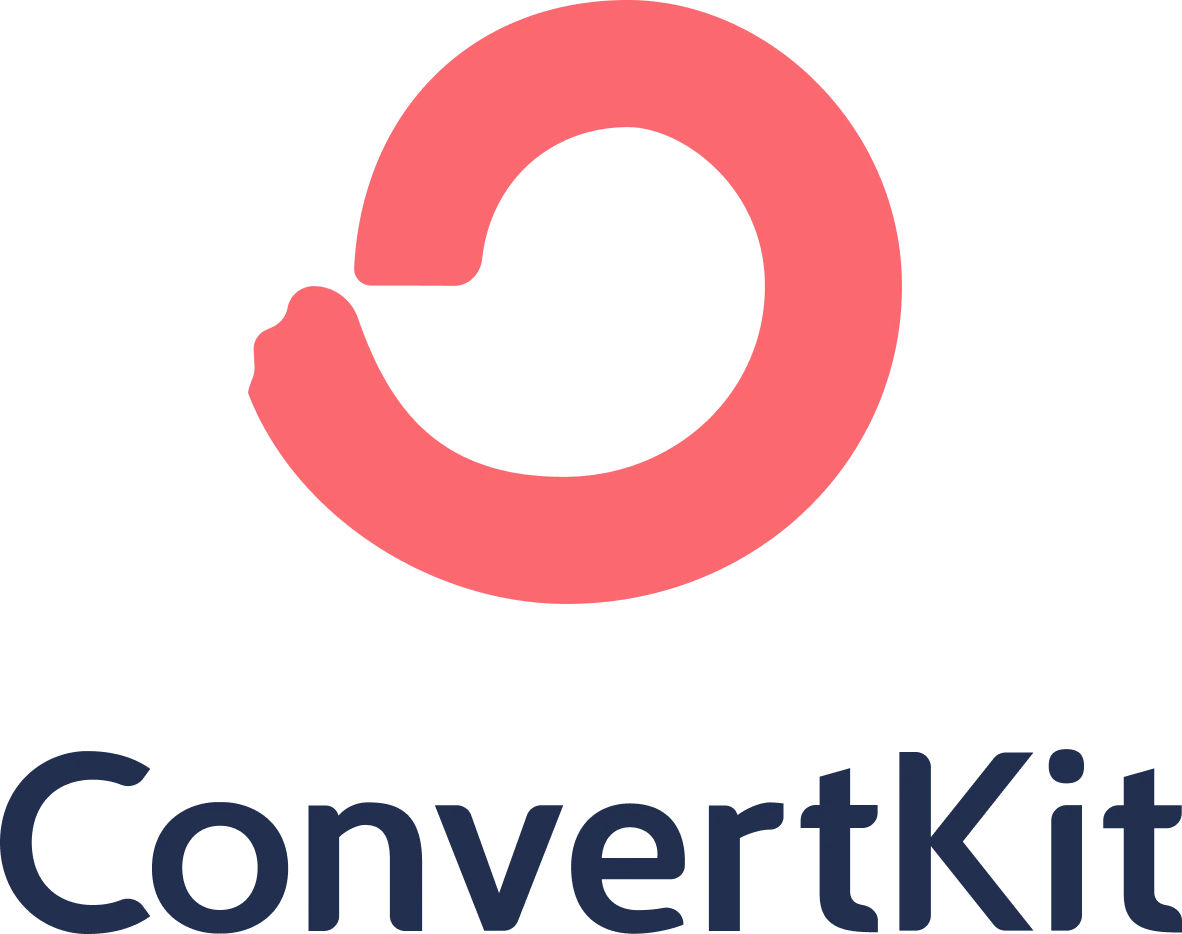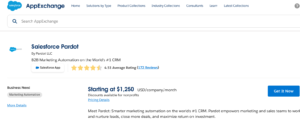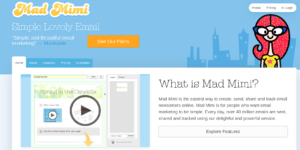Understanding the Basics of ConvertKit
Email marketing has revolutionized the way businesses communicate with their audience. Amidst a plethora of tools available for this purpose, ConvertKit has emerged as a preferred choice for many businesses, primarily due to its ease of use and comprehensive features that cater to the diverse needs of various businesses.
At its core, ConvertKit is an email marketing software designed to help businesses automate their email campaigns. It provides an extensive range of functionalities that allow businesses to segment their audience, craft personalized emails, and track the performance of their campaigns. From managing subscribers and creating automated workflows to analyzing campaign results, ConvertKit provides a one-stop solution for all email marketing needs. The platform’s user-friendly interface and flexibility make it suitable for beginners and experienced marketers alike, making it a versatile solution in the domain of email marketing.
• ConvertKit is an intuitive email marketing tool that simplifies the process of running successful email campaigns. It offers a host of features, including audience segmentation, personalized emails, and performance tracking capabilities.
• One notable feature of ConvertKit is its ability to manage subscribers effectively. Businesses can easily segment their subscribers based on various parameters such as interests, purchase history or engagement level with previous campaigns. This allows for more targeted communication which in turn increases the chances of conversion.
• The software also provides robust automation features that help businesses create efficient workflows. With ConvertKit’s automation tools, repetitive tasks like sending follow-up emails or updating subscriber lists can be automated saving valuable time and resources.
• Tracking campaign performance is another key functionality offered by ConvertKit. The platform provides detailed analytics reports allowing businesses to measure the success of their campaigns and make data-driven decisions for future strategies.
• What sets ConvertKit apart from other similar platforms is its user-friendly interface coupled with flexibility in usage. Whether you’re a beginner just starting out with email marketing or an experienced marketer looking for advanced functionalities, ConvertKit caters to all levels of expertise making it a versatile solution in the field.
In conclusion, understanding the basics of how Convertkit works will enable any business to leverage this powerful tool effectively for their email marketing needs. By using its comprehensive set of features strategically, businesses can drive higher engagement rates among their audience leading to increased conversions and ultimately growth.
The Key Features of ConvertKit
In the realm of email marketing, ConvertKit stands out with its unique and powerful features. This web based platform has been designed with simplicity and usability in mind. Equipped with a visual automation builder, the tool allows its users to create detailed marketing funnels with conditional paths. This provides a high level of flexibility by allowing each subscriber to have a personalized customer journey.
One significant feature is the tagging system which helps in segmenting subscribers. This granularity allows businesses to target specific portions of their audience based on their behavior, interests, or location. Coupling this with the dynamic content feature, audience-specific emails can be crafted to drive high engagement rates. Additionally, built-in landing page and form builders add to the user convenience, eliminating the requirement of third-party tools.
Delving Into the Functionality of ConvertKit
ConvertKit, a powerful email marketing platform, presents a rich functionality that enables marketing professionals and businesses to enhance their email campaigns significantly. With a keen emphasis on simplicity, ConvertKit comes built with an array of features designed to provide users with the ability to create custom landing pages, segment email subscribers, and automate email sequences. The automation workflows, for instance, help automate complex processes and deliver tailored content to subscribers based on their behavioral data. These automated processes eliminate the need for repetitive tasks, thereby saving users a significant amount of time and effort.
One outstanding feature of ConvertKit is its robust form building capability which allows creation of multiple types of forms depending on individual campaigning needs. Integrating these forms onto different digital platforms is smooth and easy, making this tool a stand-out choice for marketers looking to expand their reach and generate more leads effectively. Notably, ConvertKit’s visual automation builder provides a simplified yet effective way to design intricate email sequences, helping users fine-tune their email marketing strategies for higher engagement and improved conversion rates.
How ConvertKit Streamlines Email Marketing
In the realm of email marketing, efficiency and efficacy are two paramount factors. ConvertKit neatly packages these into a simple to use and immensely effective tool. By consolidating numerous aspects of email marketing into one platform, ConvertKit minimizes the time businesses need to devote to managing their email campaigns. This seamless integration of features enables firms to strategize, create, execute, and monitor campaigns all from a singular point of access.
Additionally, ConvertKit’s distinct visual automation builder enhances streamlining of email marketing. This key feature allows users to envision the flow of their email sequences simplifying automation processes. This way, businesses can easily craft personalised customer journeys catering to multiple market segments. Beyond mere scheduling, this resource includes conditional logic, assisting businesses in making real-time decisions based on customer behaviours, thereby vastly improving engagement rates. The synergy of these features demonstrates the holistic streamlining ConvertKit offers in managing email marketing efforts.
Exploring the User Interface of ConvertKit
Diving deep into the user interface of ConvertKit, users are greeted with a clean, intuitive, and user-friendly design. The layout is crafted to make navigation easy, even for individuals who are not technologically savvy. The main dashboard provides quick access to critical components such as subscriber data, automation functions and reports, saving valuable time and making email campaign management more efficient.
In addition to the streamlined layout, ConvertKit incorporates visually appealing and straightforward graphical representations. The ‘form performance’ graph, for instance, enables a user to quickly comprehend the subscription trends over a period of time. In a similar vein, the ‘subscriber growth’ graph offers an overview of the subscriber additions and losses, fostering better strategic decisions. The design ethos clearly reflect a focus on presenting the most relevant information in an immediately digestible manner.
The Benefits of Using ConvertKit for Your Business
ConvertKit, known for its usability and powerful features, offers businesses a plethora of advantages. As an entrepreneur, the primary advantage you seek is developing and maintaining relationships with customers, which is, after all, the essence of email marketing. This platform fosters connections by offering features such as personalized and automated emails, and it speaks to your subscribers, not at them. Furthermore, ConvertKit’ segmentation feature imparts a surgical precision to your targeted marketing campaigns, significantly improving their efficiency and effectiveness.
In addition, the analytics offered by ConvertKit bring transparency to your marketing efforts. The detailed reports allow you to understand what works and what does not in your campaigns, and thereby, determine the course of your future marketing strategies. The A/B testing offered by the platform quickens this learning curve as it provides a direct comparison between the performances of two strategies. Furthermore, perhaps the most compelling argument for the use of ConvertKit is its visual automation builder. With the ability to automate your workflow with ‘if this, then that’ style automation rules, marketing campaigns can run at full potential with minimal direct oversight, freeing up your time for more strategic tasks. This feature set makes ConvertKit a desirable tool for businesses and entrepreneurs equally.
Comparing ConvertKit with Other Email Marketing Tools
In the realm of email marketing tools, ConvertKit easily stands out due to its unique features and simplicity. However, understanding its performance in contrast to other tools can provide a clearer picture of its suitability for different business needs. For instance, Mailchimp is often compared to ConvertKit due to its popularity. While both offer intuitive user interfaces, ConvertKit provides a more streamlined approach to email automations by allowing users to visualize their email sequences. Mailchimp’s strength, on the other hand, lies in its broader range of templates for email campaigns.
Another point of comparison is with the tool Sendinblue. It’s noteworthy to mention Sendinblue’s SMS marketing capabilities, which is an area that ConvertKit does not cater to. Moreover, Sendinblue also offers a free plan that could be suitable for smaller businesses with lower budget allocations, which contrasts with Convertkit’s premium pricing. However, the automation sequences and subscriber organization, found in ConvertKit, are geared more towards complex business needs which can justify its investment. Hence, each tool carries its unique strengths and weaknesses and the suitability purely depends on the specific needs and budget of a business.
Practical Examples of How ConvertKit Can Be Used
ConvertKit offers a variety of practical applications that can seamlessly integrate into any business model. For example, an e-commerce business may use ConvertKit to deliver automated emails to customers who have abandoned their shopping carts. With ConvertKit’s automation capabilities, the system can identify these customers, tailor the message to provide additional information, incentives or discounts and then send it out, adding value to the business-customer relationship.
In another scenario, ConvertKit may serve as a powerful tool for bloggers or content creators. Regular blog updates or new postings can be fully automated via ConvertKit, ensuring subscribers are always in the loop about new content. Additionally, segmentation tools can be used to deliver targeted content to specific groups of subscribers, based on predefined criteria such as interests or past engagement. This ensures that the right message reaches the right audience, improving content relevance and engagement rates.
Tips and Tricks for Getting the Most Out of ConvertKit
Nurturing a deeper understanding of ConvertKit’s capabilities is essential to reap maximum benefits. Several tactics can optimize its utility and enhance the effectiveness of email marketing campaigns. Firstly, segmentation is a powerful tool that allows you to categorize your subscribers based on set criteria, such as their interests or location. By utilizing this feature, you can send targeted emails that resonate more with your audience. It is also recommended to use the advanced automation features, such as visual automation builder, to create personalized email sequences for each segment, saving substantial time and effort.
Another crucial yet often overlooked feature is A/B testing. ConvertKit allows you to test two different versions of a subject line or an email to determine which version generates a better response from your audience. Observing which email designs, subject lines or call-to-actions your audience responds to best can offer vital insights. By leveraging this valuable data, you can improve your email marketing strategy and increase the rates of open, click-through and conversion. Remember, the primary aim is to provide value to your audience, so constant evaluation of campaign performance and seeking areas of enhancement can make a significant difference.
Analyzing the Pricing Structure of ConvertKit
ConvertKit, an advanced email marketing platform, establishes a pricing model reflective of the scope of usage, primarily relying on the number of subscribers. Its structure has been tailored to suit the growing needs of small to mid-sized businesses by providing three distinct pricing tiers. These include the Free plan, the Creator plan, and the Creator Pro plan. Interestingly, each plan is strategically formulated to accommodate the varying needs of differing business scales, thereby offering a dynamic range of features at each price level.
The Free plan offers the basic features necessary for small businesses starting their email marketing journey, allowing up to 1,000 subscribers. The Creator plan, starting at $29 per month for up to 1,000 subscribers, unlocks a host of powerful features such as automated funnels and sequences, making it the ideal choice for budding organizations. For businesses in need of more advanced functionalities such as subscriber scoring and advanced reporting, the Creator Pro plan, starting at $59 per month, proves to be a viable option. The beauty of ConvertKit’s pricing structure lies in its flexibility, offering businesses the convenience to upgrade, downgrade, or cancel their plans hassle-free at any point in time.
What is the basic premise of ConvertKit?
ConvertKit is an email marketing tool designed to streamline and simplify email marketing tasks and help businesses connect with their audience more effectively.
What are the key features of ConvertKit?
ConvertKit offers features such as email capture forms, drag-and-drop email creation, automated email sequences, subscriber segmenting, analytics, A/B testing, and integrations with numerous other platforms.
How does ConvertKit enhance email marketing processes?
ConvertKit helps streamline email marketing by automating tasks like sending out email campaigns and sequences, allowing for detailed segmentation of subscribers for targeted marketing, and providing insightful analytics for performance tracking.
Can you briefly describe ConvertKit’s user interface?
ConvertKit’s user interface is intuitive and user-friendly. It has a clean layout with easily accessible features, making it a breeze for users to navigate and use the tool effectively.
What benefits can businesses gain from using ConvertKit?
Businesses can benefit from ConvertKit’s automation capabilities, segmentation features, and robust analytics. These can help improve email open rates, click-through rates, and overall engagement with their audience.
How does ConvertKit compare with other email marketing tools?
ConvertKit stands out with its simplicity, efficient automation, and powerful segmentation features. However, the specifics would depend on the comparison criteria and the other email marketing tool in question.
Can you provide practical examples of how ConvertKit can be used?
ConvertKit can be used for creating email capture forms and landing pages, automating email sequences for new subscribers or specific segments, and tracking the performance of your email campaigns, among others.
Do you have any tips or tricks for maximizing the use of ConvertKit?
To get the most out of ConvertKit, make use of its segmentation features, regularly review and optimize your email sequences based on performance data, and integrate it with other platforms you’re using for added efficiency.
How is ConvertKit’s pricing structure designed?
ConvertKit offers different pricing tiers based on the number of subscribers, starting with a free tier. Each tier includes an increasing number of features and services, allowing businesses to choose a plan that best suits their needs and budget.




